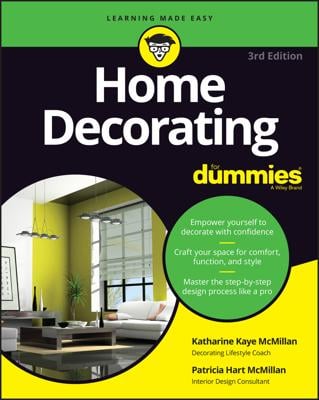Your kitchen may be the most popular room in your home, so you want it to work right. And if your kitchen is designed properly, it will become an area where family and guests will naturally gravitate. Here are some ideas about how to make sure your kitchen space functions well.
Use the work triangle: Creating a smooth workflow should be a primary objective in a kitchen redesign. And the best way to have a smooth flow is to create a work triangle between the sink, stove, and refrigerator that makes a kitchen either usable or a room to avoid. No leg of the triangle should be shorter than 4 feet or longer than 9 feet, and the total of the triangle’s three legs should be no greater than 26 feet.
Keep your workspace separate: Make sure your kitchen work triangle is out of the flow of the main traffic. You need to have an alternate way to move through the kitchen without interfering with the cook. Your walkway doesn’t have to be a large space, but you do need enough room to avoid bumping into other people in the kitchen.
Install adequate doors: It’s the scene that creates a lot of laughter in the movies: Two people coming from opposite directions and headed through a too-narrow doorway. It’s not funny if it happens to you. To avoid a potentially messy and dangerous collision, make sure the doorways are wide enough — at least 32 inches.
Avoid knocking knuckles when opening doors: To avoid knocking knuckles, be sure that no entry doors, appliance doors, or cabinet doors interfere with each other when opening. Check this stuff out early on in the design process. You’ll be glad you did.
Make dish loading easy: The edge of the dishwasher should be within 36 inches of the sink. Any greater distance and you have to take a short stroll just to load the dishwasher. Not a big deal, but it can get frustrating after a while.
Make countertops at different heights: The National Kitchen and Bath Association (NKBA) recommends two work-counter heights in a kitchen to make the kitchen more accessible for people of all ages. One counter should be between 28 and 36 inches above the finished floor and the other between 36 and 45 inches above the floor.
Store those dirty dishes: You need enough space to temporarily stack the dishes while you’re cleaning up after meals. To do this efficiently, you’ll want at least 24 inches of countertop space on one side of the sink and 18 inches on the other. Anything less and you can expect to lose a dish or two if you try to stack them to clean them.
Plan a grocery resting area: You need at least 15 inches of clear counter space on either side of the refrigerator so that you can safely set a bag of groceries down while loading the refrigerator.
Place the microwave safely: For young children or short adults, removing hot food or liquid from the microwave oven can be a problem. For safe use, all microwave ovens should be placed so that the bottom of the oven is 24 to 48 inches above the finished floor.
Plan plenty of floor space: There should be a clear floor space of 30 x 48 inches in front of the sink, dishwasher, cooktop, oven, and refrigerator. These spaces can overlap.

